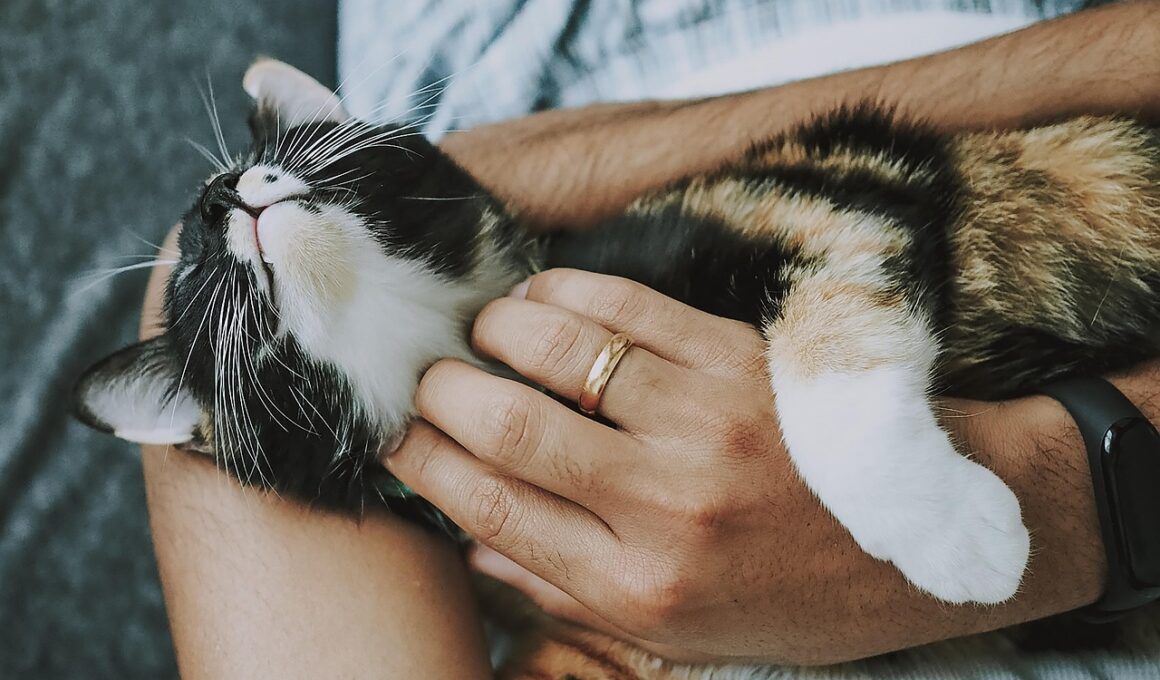Effective Training Techniques for Cats with Behavioral Problems
Adopting a cat can be one of the most rewarding experiences for pet lovers. Yet, many prospective owners often overlook the need to adopt cats with behavioral issues. These cats may exhibit problems such as aggression, fear, or litter box aversion. It is important to understand that many of these cats come from traumatic backgrounds and therefore require patience and understanding from their new owners. Training plays a crucial role in transforming a cat with behavioral problems into a happy companion. The right approach can teach these cats how to trust humans and overcome their issues, leading to a more harmonious household. If you’re considering adopting a cat with behavioral challenges, it’s essential to research effective training techniques. The dedication to helping a cat adapt not only benefits the animal but also creates a fulfilling bond between you and your new feline friend. Investigating various behavioral training resources and consulting with veterinarians can offer strategies tailored to your cat’s unique needs, helping to ensure a smooth transition into a loving home.
Understanding Behavioral Issues
Behavioral problems in cats can stem from various issues, ranging from past trauma to environmental changes. Recognizing the root cause of your cat’s behavior is vital. For instance, a previously abused cat may exhibit signs of fear and aggression. It’s essential to provide a stable environment where the cat can feel safe. A consistent routine can greatly help in making your cat feel secure. Understanding a cat’s body language is another key aspect. Signs of stress include hiding, hissing, or even swatting. Observing these behaviors can guide owners in addressing the issues appropriately. Positive reinforcement is a highly effective technique in training cats with behavioral issues. This method encourages desired behaviors through rewards. For example, rewarding a cat for using the litter box can create a positive association. Furthermore, enriching the cat’s environment with toys, scratching posts, and safe spaces can help alleviate anxiety and promote healthy behaviors. In time, patience, and commitment will create a more harmonious atmosphere, paving the way for a fulfilling relationship between you and your adopted feline.
Establishing a safe space for a cat with behavioral issues is crucial for effective training. This area should be quiet and comforting, allowing the cat to retreat when they feel overwhelmed. Utilize items such as soft blankets, cozy beds, and hiding spots that promote a sense of security. Avoid overwhelming stimuli in this space to help the cat relax. Gradual introductions to different areas of the home can also help them acclimate without provoking stress. Training sessions should be short but regular; a duration of five to ten minutes can keep a cat engaged without losing focus. Consistency in training commands and rewards is key for reinforcing behaviors. Consider using treats to motivate and reward your cat. Furthermore, employing calming pheromones, available in diffusers or sprays, can help soothe a jittery cat and make the training process smoother. These pheromones mimic the natural scents cats produce and can create a sense of calm. Everyone in the household should be on the same page regarding training techniques to avoid mixed signals. This unified approach fosters a stable atmosphere as your cat learns what is expected.
Using Positive Reinforcement
Positive reinforcement is a cornerstone technique in training cats with behavioral challenges. This training method involves rewarding your cat for exhibiting desired behaviors rather than punishing them for unwanted actions. This approach encourages trust and cooperation, resulting in a more responsive pet. Start by identifying what motivates your cat; this could range from treats and toys to praise and affection. Each time your cat engages in positive behavior—like using the litter box or allowing petting—reward them immediately. This immediate feedback helps your cat associate the behavior with the reward. For example, if your cat stops hissing when visitors arrive, offer a treat afterward. Gradually, your cat learns to behave calmly in those situations. Incorporating training into daily interactions will yield better long-term results. Aim for a calm and patient demeanor to support your cat as they adjust. Avoid negative reactions to undesired behaviors, as it can induce fear and hinder the training process. Instead, redirect their focus toward positive activities. Over time, with consistent practice and dedication, your cat will exhibit significantly improved behaviors and a closer bond with you.
It’s essential to be aware that some behavioral issues in cats may require help from professionals. Consulting with a veterinarian or certified animal behaviorist can provide valuable insights and tailored solutions to unique problems. These professionals can identify underlying medical conditions that might contribute to behavioral challenges. For example, urinary issues or pain from arthritis could lead to litter box aversion or aggressive behaviors. Once medical concerns are ruled out, they can offer behavioral modification techniques suited to your cat’s needs. Group classes for socialization can also benefit shy or fearful cats by gently exposing them to new experiences. Socialization helps build confidence and reduces anxiety during interactions with people and other pets. Owners should remain patient and empathetic during this process; progress can take time. Document any behavioral changes or training outcomes to track improvements or setbacks. Sharing these observations with the behaviorist can facilitate better guidance. Understanding that every cat is unique is vital for a successful transition. Ultimately, providing love, care, and expert support will result in a thriving and happy companion.
The Importance of Environmental Enrichment
Environmental enrichment plays a significant role in mitigating behavioral issues in cats. An enriched environment stimulates both physical and mental health, promoting happiness and reducing stress-related problems. Cats are naturally curious and require opportunities to explore, hunt, and play. Providing toys that encourage problem-solving—like puzzles or treat-dispensing toys—can engage your cat and keep them entertained. Rotating toys regularly to maintain interest and prevent boredom is a great strategy. Creating vertical space with cat trees or shelves can also satisfy their instinct to climb and observe their surroundings. These structures give cats a sense of safety and territory. Additionally, consider incorporating interactive play sessions into your routine; using feather wands or laser pointers can help expend energy and promote bonding. Furthermore, providing scratching posts prevents destructive behavior and encourages proper nail care. Hide treats around the house to stimulate hunting instincts and encourage exploration. A variety of stimulants ensures your cat continually discovers new joys within the household. Ultimately, a well-structured environment aligns with the training process and inspires your cat to exhibit desirable behaviors.
Lastly, adopting a cat with behavioral issues requires commitment and empathy from the owner. Each cat’s journey may differ based on their background and personality. Building a trusting relationship takes time, so give your cat a chance to adjust at their own pace. Consistency is critical when implementing training strategies. Schedule daily sessions to reinforce learning and maintain a stable routine. Over time, frequent repetition will solidify positive behaviors. As your cat starts to trust you more, you’ll witness significant improvements in their demeanor; they will gradually exhibit less anxiety or aggression. Celebrate even the smallest milestones to motivate both you and your cat. Acknowledge behavioral changes positively, reinforcing the bond between you. This supportive approach will encourage a loving relationship built on trust. While this journey may seem long, the reward of a friendly companion is immeasurable. Seek support from local rescue organizations or online communities to connect with experienced cat owners. Exchanging tips and experiences can provide you with additional tools to help your cat adapt. The ultimate goal is a happy, social cat that thrives in their forever home.
Conclusion
In conclusion, adopting a cat with behavioral issues can be a deeply rewarding experience for both owners and their pets. Understanding the foundation of these issues is a step towards correcting them. Training techniques such as positive reinforcement, establishing safe spaces, and providing environmental enrichment are instrumental in helping your feline friend navigate their new life. Seek professional assistance if needed, and remain patient as your cat learns and grows. Every small achievement in their behavior should be celebrated, reinforcing a positive atmosphere. Through dedicated effort and love, these cats can transform into loyal companions that bring joy to your home. By committing to this journey, you enrich not only your cat’s life but your own. Providing a nurturing environment allows cats to thrive and develop strong bonds with their families. Socializing your pet gradually, observing body language closely, and remaining consistent in routines will further ease their transition. Your home can become a sanctuary for a beloved pet in need, reminding us of the powerful impact we have on the lives of animals. Embrace this challenge with an open heart, and you’ll discover the beauty of unconditional love in your adopted cat.


